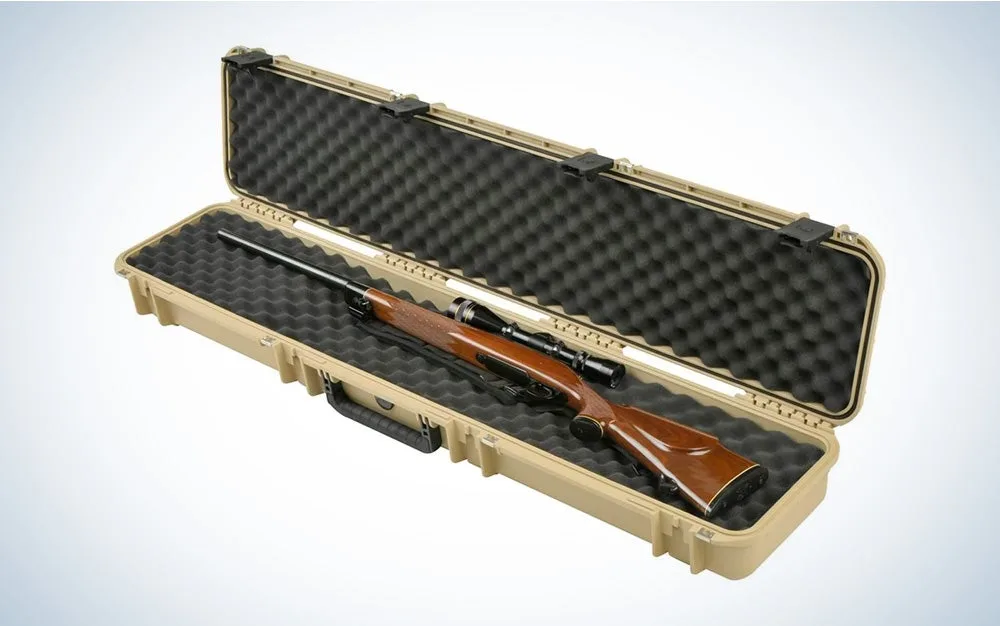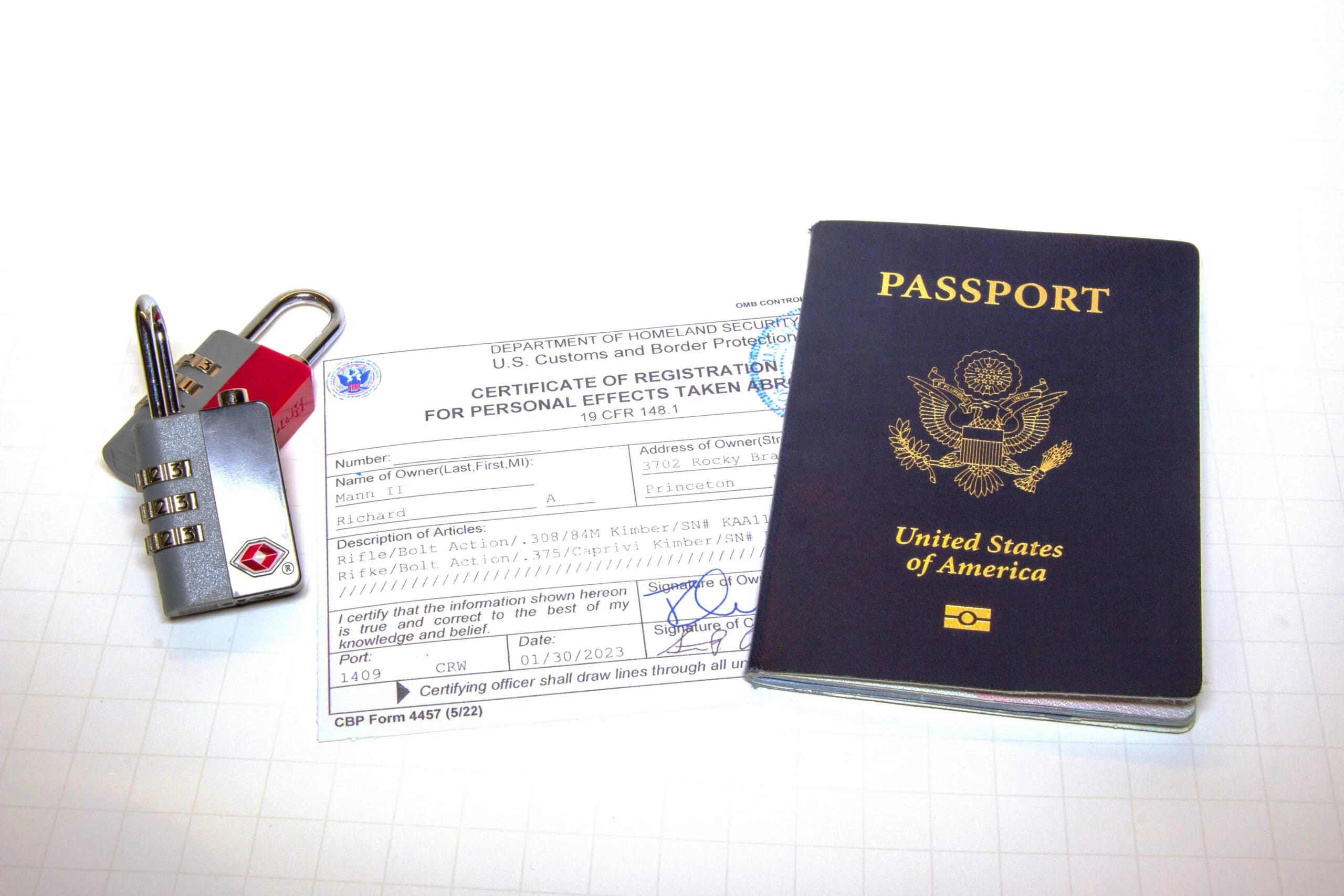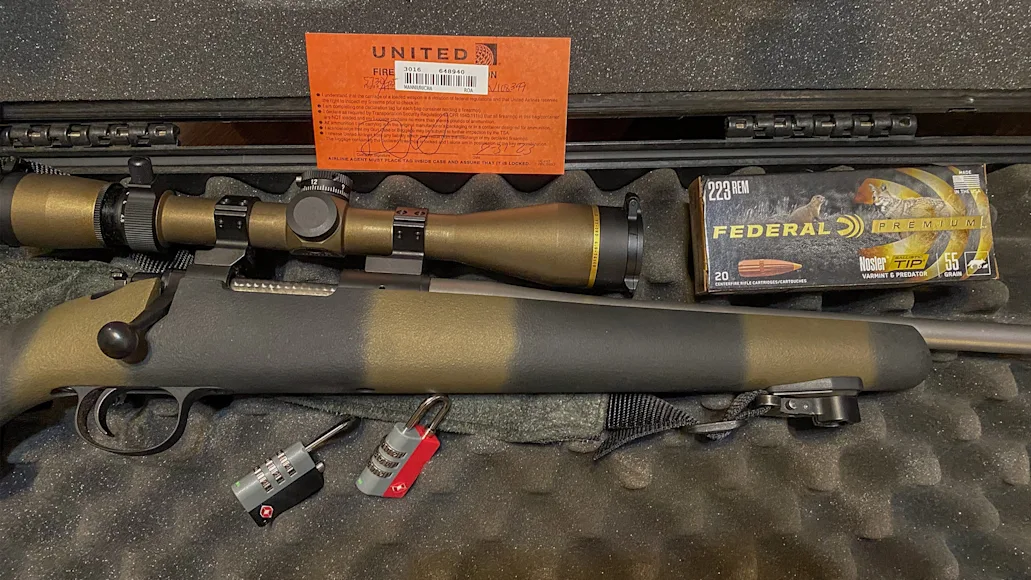_We may earn revenue from the products available on this page and participate in affiliate programs. Learn more ›
_
The rules for how to fly with a gun vary from airline to airline, airport to airport, and in some cases, from day to day. Flying with firearms is legal but it can get complicated and frustrating, particularly if you encounter airport, airline, or TSA employees who don’t seem understand current policies and procedures or who don’t seem to like guns.
Because of my work—and because I don’t go anywhere without one—I frequently fly with firearms. I’ll tell you how I go about it both inside and outside the United States. Just keep in mind that policies change, and there’s always the chance you’ll encounter a hoplophobe. In the case of the first, some politeness and patience usually take care of everything. In the case of the latter, you may not have enough politeness and patience to sort it out. If at any time things look like they’re going downhill, politely request a supervisor and maybe even law enforcement assistance. That said, it’ll very rarely come to that. If you follow the advice below for how to fly with a gun, you’ll either sail on through to your destination or at least get there, with your gun, without too much trouble.
How to Fly with a Gun Within the U.S.

During check-in, the agent will give you a firearms declaration card to place inside the gun case or next to a gun case that’s inside other checked baggage. Richard Mann
When flying with a firearm, your gun case
must be rigid enough that it cannot be pried open at the edges by hand. So, quality case like those from SKB
or Plano
are a good idea. Your ammunition—a maximum of 11 pounds (5 kilos)—can be stored inside the case with the firearm, ideally in factory packaging. You cannot check in on-line, with a baggage handler, or with kiosks, if you’re traveling with a firearm. Go straight to the ticket agent, and when you hand them your identification, say, “I have a properly secured firearm I need to check.” You’ll generally be met with one of three responses (pray for the first):
A smile and a, “Yes sir, no problem.”
Silence and a semi-confused look.
Wide eyes, and a look of panic.
The agent should ask to see the firearm so they can confirm that it’s unloaded. Only 1 out of 100 might actually know how to do this. More than likely, when you open the case, they’ll just ask you if it’s unloaded. Don’t take the firearm out of the case or wave it around. If you need to handle it, do it inside the confines of the case as much as possible. The agent might ask about ammunition, and maybe even request that it be placed into a separate checked bag. That’s not required in country and hasn’t happened to me in a long time.

Next, they’ll give you a little orange card and ask you to sign and date it. If you’re traveling with a rifle in a case that’s a separate checked bag, they’ll ask you to place the card inside the case. If you’re traveling with a handgun in a locked box, inside another piece of checked luggage, you’ll place the orange card inside the bag next to the locked gun case. Once that’s done, they’ll tell you to lock it up.
I used to use keyed locks but switched to TSA approved locks
because I’ve had TSA cut my locks off too many times, and I’ve even had to leave the boarding gate to provide TSA the keys. Regardless of the locks you use, you’ll need one in every locking hole that the case has. Once locked, the agent will either take your case, or ask you to take it to TSA, and you might be asked to wait an additional 15 minutes or so before going through security. If things go smoothly, checking in with a firearms adds about five minutes to the process. If it doesn’t, it might add 30 minutes or more. So be sure to allow extra time.
When you arrive at your destination and proceed to baggage claim, know that your firearm may not come out on the carousel. Don’t panic, some airlines take firearms to the baggage office or ticket agent where you’ll have to claim them with identification and maybe your luggage tag. So keep that handy.
How to Fly with a Gun Out of Country

For international travel with guns, you’ll need your passport, locks, and a completed, signed, and stamped U.S. Custom’s form 4457. Richard Mann
The first thing you must do when traveling out of the country with a firearm is visit a U.S. Customs office and have a U.S. Customs form 4457 completed
. The purpose of this form is so you can prove to Customs—when you return to the U.S.—that the firearms were yours when you left. It’s intended to prevent import duty charges on expensive stuff, but the only thing I’ve ever seen Customs use it for has been firearms. (Maybe that’s because I don’t have anything else that’s valuable.) Otherwise, traveling out of country with firearms is not much different, except they’ll probably mandate your ammunition be packed separately, and in some cases, the ticket agent may request to see the firearms permit for the country you’re traveling to.
When you land in another country the rules and regulations vary. For example, South Africa will not let you bring a firearm in country without a completed U.S. Customs form 4457
. The last time I traveled to Scotland with a rifle, I had to provide a copy of my current hunting license and do all the paperwork in advance. Do your research and follow the rules, exactly.
When you return you must clear Customs. The procedure will vary, but expect to be sent to a separate room/location to meet with a US Customs agent. It’s been my experience that these agents are mostly humorless and would much prefer to be somewhere else and not dealing with you, so don’t be a wise ass or crack jokes—keep it, strictly business. If the port of entry is your final destination, you can take your gun and leave. If not, you’ll have to recheck it for your next flight, often following the same procedures for flights within the United States.
Final Tips & Tricks for Traveling with a Firearm

If you want to use a soft case after you reach your destination, put it in with the hard case before you fly. Richard Mann
Familiarize yourself with the firearms laws within the state or city you’re flying to.
Put my guns inside a soft case, inside the hard case. This provides additional protection and a more convenient way to carry them when hunting or at the range after reaching my destination.
Boldly display your name and cell number on the outside of the hard case. This gives TSA or airport personnel an easy way to reach you if there’s a problem.
Consider placing a copy of your identification or concealed carry permit, along with your cell phone number, inside the gun case.
It’s never a bad idea to have an extra set of locks and two sets of keys. If you use combination locks write the combination down somewhere!
Make damn sure you don’t have any ammunition, gun parts, or empty cases, on your person or in your carry-on luggage. If you do, things can get ugly quick.
If you’re independently wealthy, just fly private and rent your own plane. Then you can hold your guns in your lap if you like.


